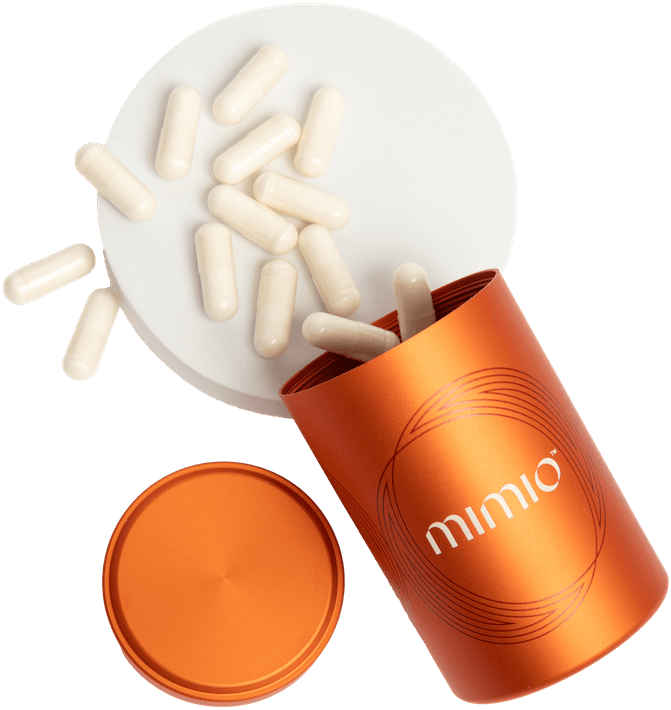Your metabolic rate is the number of calories your body burns to maintain basic physiological functions like breathing, circulating blood, and cell production. Understanding your metabolic rate can provide valuable insights into your overall health and help tailor your diet and exercise plans.
The good news? You don't need a laboratory to figure this out. Here's how you can test your metabolic rate at home.
What is Metabolic Rate?
Metabolic rate is the amount of energy expended by your body’s normal functionality in a day. It's divided into three components:
- Basal Metabolic Rate (BMR): The energy your body needs at rest to maintain vital functions.
- Thermic Effect of Food (TEF): The energy used to digest, absorb, and metabolize food.
- Activity Thermogenesis: The energy expended through physical activity, both exercise and non-exercise related.
Knowing and understanding your metabolic rate helps to understand how many calories you need to consume to maintain, lose, or gain weight, and/or caloric needs required to perform at your peak.
Methods to Test Your Metabolic Rate at Home
-
Basal Metabolic Rate Calculators:
- Several online calculators can estimate your BMR based on factors like age, gender, height, and weight. Websites like Calculator.net provide a quick and easy way to get an estimate.
- How to use it:
- Input your age, gender, height, and weight
- The calculator provides an estimate of your daily caloric needs at rest
- Pros:
- Quick and easy
- No equipment needed
- Cons:
- Estimates only; not 100% accurate
- Doesn't account for muscle mass versus fat mass
-
Wearable Fitness Trackers:
- Devices like Fitbit, Apple Watch, Whoop, and Garmin can estimate your metabolic rate by tracking your heart rate, activity levels, and other health metrics
- How to use it:
- Wear the device consistently.
- Ensure the device tracks your heart rate and activity levels accurately.
- Sync with a health app to get insights into your metabolic rate.
- Pros:
- Provides ongoing monitoring
- Tracks activity levels in addition to resting metabolic rate
- Cons:
- Can be expensive
- Accuracy varies between devices
-
Caloric Intake and Weight Tracking:
- Track your daily caloric intake and weight over a period of time to estimate your metabolic rate
- How to use it:
- Use a food diary app like MyFitnessPal to log everything you eat.
- Weigh yourself every day at consistent times
- If your weight remains constant, your average daily caloric intake is a rough estimate of your Total Daily Energy Expenditure (TDEE)
- Pros:
- Personalized to your body
- Helps you understand your eating habits
- Cons:
- Time-consuming
- Requires meticulous logging of food and weight
-
Resting Metabolic Rate Testing Kits:
- Home testing kits like those from Lumen or BodySpec provide more precise measurements of your resting metabolic rate (RMR)
- How to use it:
- Follow the instructions provided with the kit. These usually involve breathing into a device to measure oxygen consumption and carbon dioxide production
- The device analyzes the data to estimate your RMR
- Pros:
- More accurate than calculators
- Can provide insights into your metabolic flexibility
- Cons:
- Can be expensive
- Requires following instructions carefully for accurate results
Interpreting Your Results
Once you've determined your metabolic rate, here's what you can do with the information:
- Maintain Weight: Consume the number of calories equal to your TDEE if your goals involve maintaining current weight
- Lose Weight: Create a caloric deficit by consuming fewer calories than your TDEE. Aim for a deficit of 500 calories per day to lose about 1 pound per week
- Gain Weight: Create a caloric surplus by consuming more calories than your TDEE. Aim for a surplus of 500 calories per day to gain about 1 pound per week
As always, everyone should consult a healthcare professional before altering their diets or activity levels.
Boosting Your Metabolic Rate
If you're looking to boost your metabolic rate, consider these tips:
- Increase Physical Activity: Regular exercise, especially strength training or high intensity interval training (HIIT), can increase muscle mass, which boosts metabolic rate
- Eat Protein-Rich Foods: Protein has a higher thermic effect than carbs or fats, meaning your body uses more energy to digest it, and thus, works harder
- Stay Hydrated: Drinking water can temporarily boost your metabolic rate by up to 30% for about an hour. As a reminder, men should drink 15.5 cups (or 124 oz) per day, and women should drink 11.5 cups (or 92 oz) per day
- Get Enough Sleep: Poor sleep can negatively impact your metabolism and lead to weight gain. As a reminder, adults should get 7 or more hours of sleep per day
- Consider Supplements: Some supplements like Mimio's Biomimetic Cell Care are designed to support cellular health and metabolism. Check out the product page for more information
Conclusion
Testing your metabolic rate at home can be simple and provides valuable insights into your health. Whether you're using an online calculator, a wearable device, tracking your intake and weight manually, or using a testing kit, understanding your metabolic rate is a key step toward tailoring your diet and exercise plans for optimal health.
By knowing your metabolic rate, you can make informed decisions about your caloric intake and activity levels, which helps you achieve your health and fitness goals more effectively. Remember, it's not just about the numbers—it's about understanding your body and making choices that support a healthier, more energetic you.



